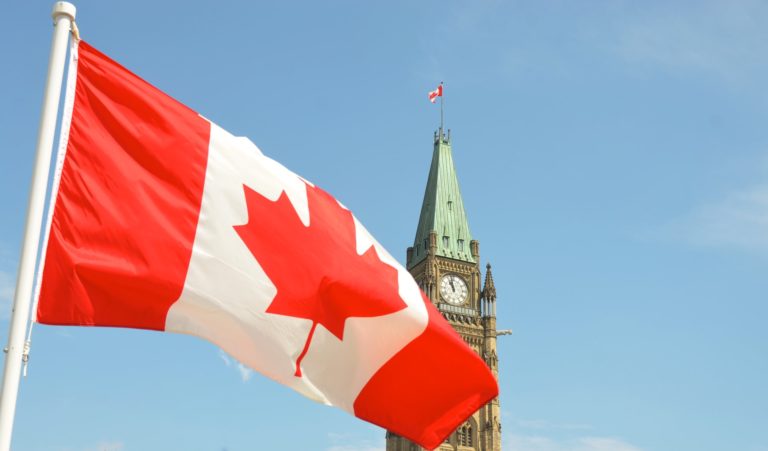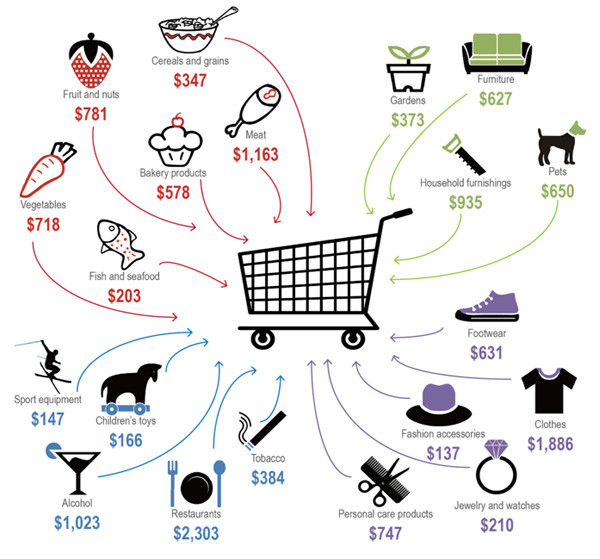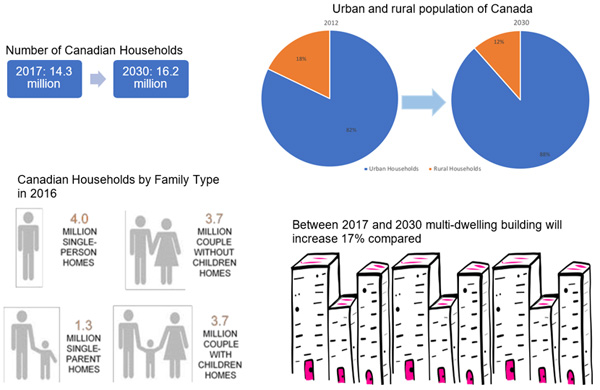

The Canadian job market has continued its upward trajectory, which has boosted the confidence of Canadian consumers. According to a recent report by the Conference Board of Canada, this newfound confidence is driving a continuous spending pattern, which paired with Canadians continuous borrowing, with a total of $37,400 held per household in consumer debt, has lead to high levels of consumer spending. On the other hand, the Bank of Canada has announced that inflation will rise above the earmarked 2%, which will lead to higher prices, especially for fuel, energy, food, healthcare and education. The combination of these three factors translates to increased consumer spending on essential and non-essential items.
Canadian shoppers are aggressively embracing e-commerce, particularly Millennials (aged 22-37), who are turning to their smartphones and other mobile devices to shop online. The main reason for this proliferation in online shopping is a convenience, followed by lower prices [1]. Their purchasing decisions are heavily influenced by reading online reviews, online comments and feedback on social media platforms. Currently, the most popular products purchased online in Canada are books, music, movies, video games, electronics, clothing and footwear. By 2020, experts predict that 85% of customers interactions with an enterprise will be without interacting with a human [2], further showing the future reliance consumers will have on e-commerce.


Newly arrived immigrants from South Asian, China, Philippines and the Middle Eastern countries are changing Canadian consumer behaviour, especially food shopping. One food category that is experiencing the most revival and transformation is fresh groceries (meat, fruits and vegetables, deli, bakery and seafood) [3], as Canadians look for new flavours. Additionally, new immigrants to Canada tent to wield considerable spending power which encourages stores to carry products desired by the immigrant population.
Canadians have never been more conscious about their health and diet than they are today. After years of sedentary lifestyles and overconsumption, consumers are showing an increased interest in managing their health and wellness. Consistently sourcing healthier food option that is “free from” caffeine, sugar, dairy, gluten and other additives, that can be consumed by people with dietary restriction, such as gluten-free, vegetarian, dairy free, gain free is now the new normal. Consumers are also more and more interested in finding “natural source” foods that are organic and even locally made, which give the impression of being chemical free.


Brand loyalty today is not what it used to be. The informed consumer of today is inundated with options and with access to data at their fingertips, they are not blindly staying committed to a brand. Simply having a superior product is not enough to win the competition for today`s consumers; it is critical to show value in many areas, not just price, but also a corporate social responsibility. A company must be willing to show they can balance profits with people and planet. Companies need to redefine the meaning of brand loyalty and act on many fronts to build that relationship and loyalty. Important steps to consider are: listen to consumers, be open and transparent about the product, the company, the suppliers, give them convenient purchasing and rapid delivery.
In 2016, Canadian households spent on average $84,489 per household, out of which 33% was on essential items (like food, non-alcoholic beverages and housing). This number is projected to increase by an average of 3.8% per year until 2030, mostly due to rising housing cost. From 2011 until 2030 it is projected that the top five fastest growing consumer expenditure items will be tuition for higher education, health and medical goods and services, telecommunication devices and services, miscellaneous goods and services, and expenses related to transportation (vehicle, air travel, public transport). Residents of Alberta had the highest average household expenditure at $106,514 per year, while Quebec had the lowest average household expenditure at $70,853 [4]. Consequently, the median income in 2015 for the province of Alberta was the highest amongst all Canadian provinces, at $94,000, while the median income in Quebec was $60,000, making it the province with the second lowest income only after New Brunswick at $59,359. The median income in Ontario was $74,300 [5].
Canada`s population continues to grow at a steady pace. On January 1st, 2018, Canada`s population stood at 36.96 million, which had increased by 78,805 people from October 1, 2017, a growth of 0.21% in just 3 months. By 2030, the Canadian population is projected to reach 41.10 million, an increase of 11.3% from 2018. But due to the increase in life expectancy, the fastest growing population during this period is the 70-79 and 80+ age group [7]. Canada`s birth rate is set to decline from 10.9 births per 1000 in 2017 to 10.0 by 2030, and so international migratory increase will continue to be the main driver of Canadian population growth in the coming years. Net migration of foreigners into Canada will account for 78.5% of the population growth. Canadian provinces currently experiencing population growth are: Quebec, Ontario, Alberta, British Columbia and Yukon. The top five cities with the largest population and the fastest population growth are: Toronto (5.60 million and 17.7%), Montreal (3.75 million and 11.6%), Vancouver (2.32 million and 7.4%), Calgary (1.22 million and 3.9%) and Edmonton (1.09 million and 3.5%).


The majority of Canadians live in urban areas, in less than 3 people households and in relatively spacious homes. But, the overall number of households in Canada has continued to expand, with the growth of single person households, which presents a growing opportunity to businesses. The percentage of Canadians living in urban areas by 2030 will reach over 36 million and account for 88% of the total population. The main reason for this shift is the Millennial generation who prefer to stay in Canada`s largest cities, as it aligns with their social and professional lifestyle. Households with no children make up more than 50% of all households in Canada, which means an increasing demand for non-essential goods and services (discretionary spending). The number of Canadians living in multi-dwelling units (condos and apartments) is projected to increase as Millennials increasingly opt for the urban condo living lifestyle [8].
1 PWC`s Total Retail Report 2016
2 Five Game-Changing Consumer Trends, 2016
3 Euromonitor International; Consumer Lifestyles in Canada, 2017
4 Statscan CANSIM Table 203-0021, 2016
5 Household income in Canada: Key results from the 2016 Census
6 http://www.statcan.gc.ca/pub/91-002-x/91-002-x2017004-eng.htm
7 Euromonitor International; Households: Canada, May 2017
8 Euromonitor International; Households: Canada, May 2017